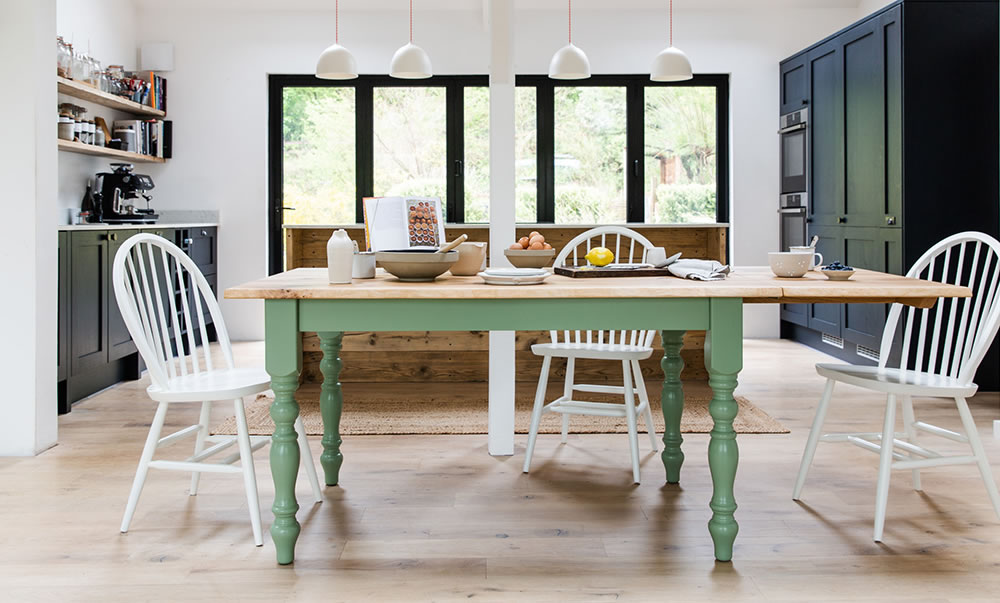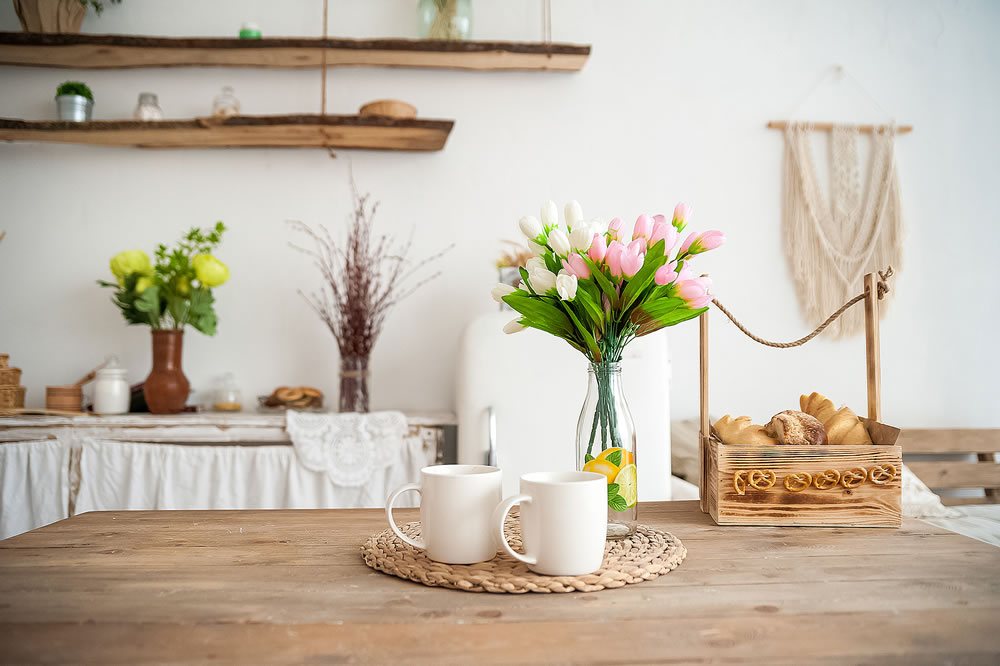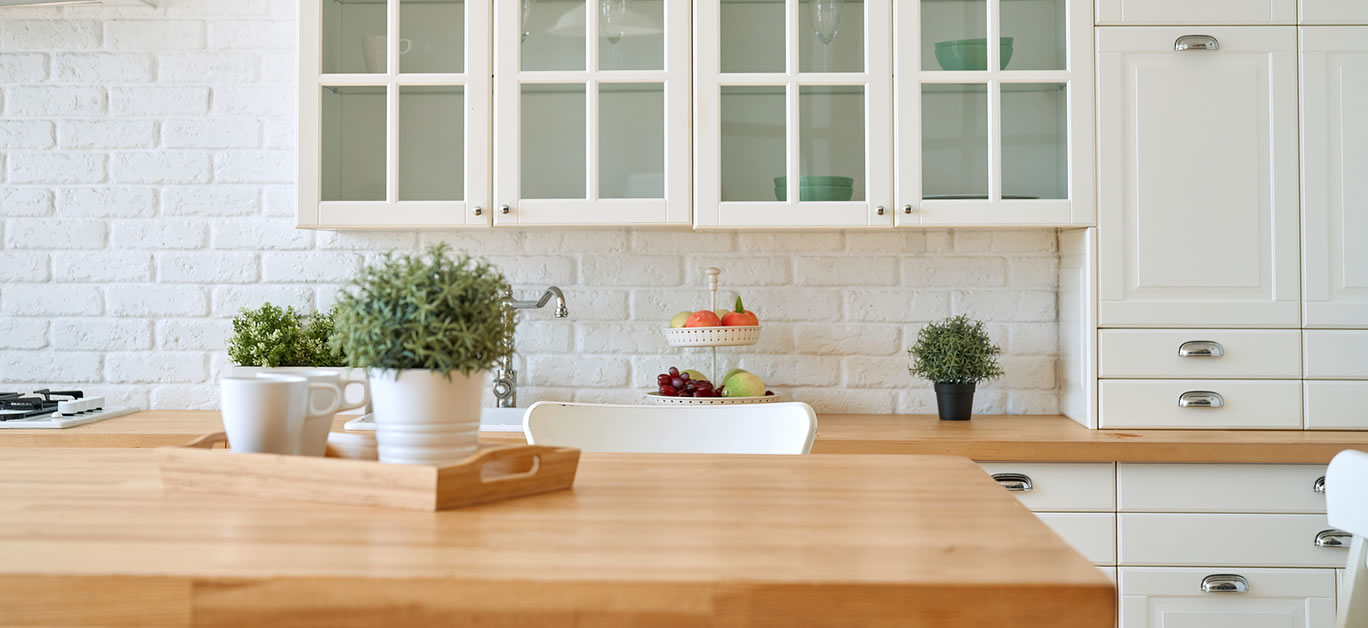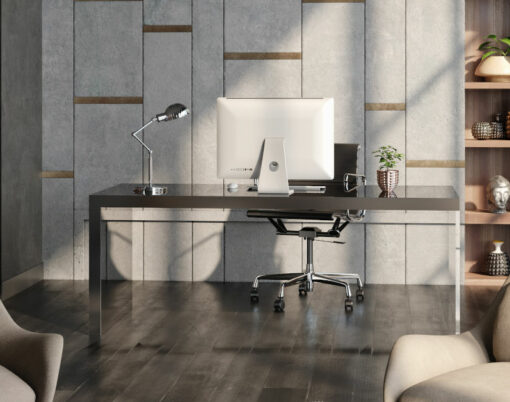Looking to upgrade your kitchen this summer and inject a little added luxury into your home? If space is tight and you’re eager to accommodate house guests now that lockdown and social distancing measures have finally been eased, you might be wondering how best to optimise your space.
Most kitchen tables, if large enough to seat your visitors, tend to be exceedingly large, and can quickly dwarf any kitchen space without leaving scope for much else, but an extendable kitchen table is a great way to solve the problem with relative ease. Folding away quickly when not in use to allow you to make full use of your lavish kitchen and all of the upmarket extras you’ve added to make cooking and socialising more enjoyable, it can be pulled out for occasions such as dinner parties and larger family meals.
Gone are the days when versatile tables like these looked cheap and unattractive, so we can all breathe a sigh of relief when it comes to the impact on your aesthetics. From farmhouse to drop leaf, today’s new breed of luxury, high-end extendable kitchen tables tick all the right boxes and look chic and sophisticated, so much so that they’ll make a beautiful focal point within the room.
Extendable tables have been dusted off, refinished, and recreated to offer something that is just as stylish as it is useful. Many of the contemporary extendable tables still harness old world charm and styling, but are more cleverly designed to reduce the traditional ordeal of getting them set up – instead utilising hinges, built-in mechanisms and modular sections to create bigger usable areas with minimal hassle.

History of the style
If you were feeling generous, you could attribute the invention of the extendable table to the Romans, although it wasn’t until the Victorian period that they really rose to popularity and prominence. The ancient Romans, not ones to ever say no to a party but still deftly aware of the space they had available, created tables that were large and rectangular in shape, but were also composed of a number of different platforms and pillars – similar to a sectional, only for eating as opposed to sitting. Back then, they would then move the tables underneath their beds when they were finished entertaining in order to save space – a nifty space saving innovation at the time, and one that has continued to punctuate our homes – luxury and otherwise – ever since.
It was this period that really cemented the idea of modular and space-saving furniture, and through the ages that were to come, a number of extendable, foldable, and highly stowable tables were created. From the loo table – a small bedside table that was generally round and used for playing cards and which could then be tilted and stored flat – to Gateleg tables, drop-leaf and extendable kitchen tables, each have had their moment in the spotlight when it comes to the latest household trends, with a number of these still very much doing the rounds until today.
Some of these original styles were moulded and redrafted to fit in with the fashion of whatever time the furniture was built, with Victorian era drop-leaf tables becoming hugely popular among mid-century designers, and the cumbersome refractory tables getting a fresh take as extendable tables throughout the 20th and 21st centuries. The main idea behind these impressive contortionists of modern furniture was to reserve space when entertaining wasn’t on the horizon. During the housing and interior design boom of the 1950s, smaller houses became fashionable and the Craftsman, bungalows, and a number of other small cottages with clever floor plans became the norm for modern housing, which meant that space was at a premium, but households were still expected to entertain often regardless.
A new era
Contemporary housing is still on the small side, especially in European countries. Minimalistic design and aesthetics that lean towards having broad areas of negative space meant that most of our most treasured pieces of furniture needed to do double duty. They had to not only provide enough space to easily accommodate friends and growing families, but they also had to fade into modern décor without completely overtaking the space – which is where extendable kitchen tables truly began to shine.
Extendable tables like these are designed in a huge number of ways, with a wide variety of different mechanisms and leaf settings that range from the mechanical and elaborate – for example, tables that twist or extend to incorporate the leaf hidden inside the table itself – or the simple and familiar, where the table extends and a stored leaf (or multiple leaves) can be placed into the newly exposed section. All of these allow for a quick transformation of any room.

Types of extendable kitchen tables for your space
Depending on the type of design that best fits the luxurious feel you’re trying to create – whether modern, vintage style, or something different entirely – the ultimate extendable kitchen table for your space will vary in both functionality and genre. Like every other piece of furniture that has been specifically curated to fit a room, extendable tables can be easily integrated into any aesthetic. Cottagecore and chic themes will always benefit from a well placed farmhouse style extendable table, while rooms that wield more Scandi or modern influence can really benefit from more modular selections.
Choosing an extendable table doesn’t have to be a game of chance; there is no longer any need to compromise your style in order to find the table that perfectly complements your space and delivers sufficiently on the practical front, too. Drop leaf tables will fit in just about any nook or cranny you have, making an incredible pedestal for your favourite artwork, knickknacks, or houseplants which can be easily moved into a more central area of the room when needed.
Perhaps the greatest thing about extendable tables isn’t simply that they work fantastically in your dining space, but they can also create multi-functional spaces when you’re low on footprint room. Serving as everything from a hot desk for home working to a craft space for the kids, they can fully transform just in time for dinner – which is something worth cheering about if your home is more bijou than big and sprawling.






















